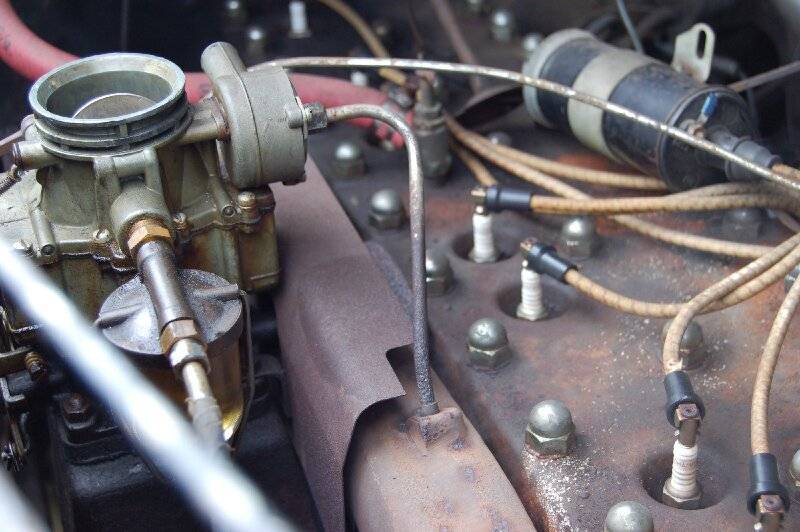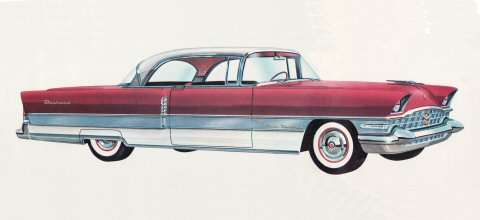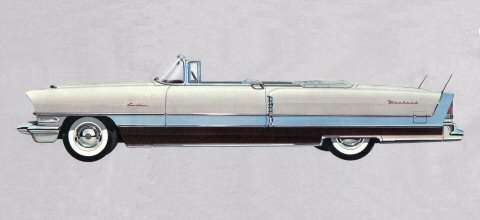|
Re: 1933 Super 8 Stainless steel acorn head nuts
|
||||
|---|---|---|---|---|
|
Home away from home
|
Way overthinking. Tighten them to 65 (if that is the number) and move on. Recheck after it has been run. Do that at least twice. Perhaps with a few hundred miles put on it inbetween checks.
Posted on: 2021/8/23 12:18
|
|||
|
West Peterson
1930 Packard Speedster Eight boattail (SOLD) 1940 Packard 1808 w/Factory Air (SOLD) 1947 Chrysler Town and Country sedan 1970 Camaro RS 1936 Cord phaeton packardinfo.com/xoops/html/modules/newbb/viewtopic.php?topic_id=4307&forum=10 aaca.org/ |
||||
|
||||
|
Re: 1933 Super 8 Stainless steel acorn head nuts
|
||||
|---|---|---|---|---|
|
Home away from home
|
Strength of the steel has nothing to with it. Tighten them to factory specs.
Posted on: 2021/8/23 19:51
|
|||
|
||||
|
Re: 1933 Super 8 Stainless steel acorn head nuts
|
||||
|---|---|---|---|---|
|
Quite a regular

|
While I agree that the risk of torqueing to factory spec. is low, I don't agree with your comment that strength of steel has nothing to do with it. Try to do it with mild steel... I thought that I could get away with it just for initial tryout of the engine. They failed within 2 hours.
Thanks for the advice to go ahead though. I will do just that.
Posted on: 2021/8/23 21:51
|
|||
|
||||
|
Re: 1933 Super 8 Stainless steel acorn head nuts
|
||||
|---|---|---|---|---|
|
Home away from home
|
From an engineering standpoint - the torque spec relates the desired clamping force to the friction between the threads - it is a function of (A) the material of the nut and the stud and (B) the state of lubrication between the nut and the stud. Generally speaking, however, the quality and level of heat treatment or alloy content of the steel doesn't affect the friction coefficient.
What the torquing does, therefore, is create the clamping force. Having higher- or lower-strength nuts (as long as they are steel) wouldn't change the relationship between torque and clamping force, though it would change the maximum clamping force that can be obtained, for if the nuts are too soft they will fail before the full clamping force can be realized. Therefore, to create the clamping force you need one has to torque to the factory specification, and here's hoping that the stainless acorn nuts have the strength to take the torque. Usually, btw, stainless steel has a lower tensile strength than the grade 8 nuts originally spec'ed, which means there is a chance you could fail the nuts at the factory spec, though you should still attempt to torque them to that spec. Max and I think Kanter both sell chromed, not stainless steel, acorn nuts. Stainless steel versus Grade 5 and Grade 8
Posted on: 2021/8/24 1:21
|
|||
|
||||
|
Re: 1933 Super 8 Stainless steel acorn head nuts
|
||||
|---|---|---|---|---|
|
Home away from home
|
Hello all, I have recently removed the stainless acorn nuts from Noels 41 160 Coupe as the studs had been reinstalled at different lengths after the block was decked. In some cases the acorn nuts were bottoming and were not torquing the head. I went back to the original nuts. The stainless acorn nuts look great but there was probably a good reason that Packard did not use them as OEM ( or did they at some time? ) I have seen some disasters with stainless wheel spokes as well. Peter T
Posted on: 2021/8/24 3:55
|
|||
|
I like people, Packards and old motorbikes
|
||||
|
||||
|
Re: 1933 Super 8 Stainless steel acorn head nuts
|
||||
|---|---|---|---|---|
|
Forum Ambassador

|
Stainless steels are not the "super" metals some folks seem to think they are and there are automotive applications where they are just not suitable. But good quality stainless steel acorn nuts, properly installed on quality cylinder head studs of proper length, should not present any problems. Emphasis on "good quality" and "properly installed".
Posted on: 2021/8/24 8:27
|
|||
|
||||
|
Re: 1933 Super 8 Stainless steel acorn head nuts
|
||||
|---|---|---|---|---|
|
Quite a regular

|
You are right, the length of the studs needs to be controlled - sometimes they stick out a little more - and the washer at the base is also critical.
It is also worthy to note that original Packard studs were not heat treated! The idea of using Stainless Steel is that the original look was closer to Nickel plating than to the Chrome that you see on most of our cars (at least the earlier models).
Posted on: 2021/8/24 8:32
|
|||
|
||||
|
Re: 1933 Super 8 Stainless steel acorn head nuts
|
||||
|---|---|---|---|---|
|
Home away from home

|
Attached is picture from a barn car with a custom body. The parts book is not too clear as it indicates to me the same part number for cylinder head nuts on those motors (correct me if I am wrong).
Anyway, as can be seen there is a seam in the acorn nut where a decorative cap is pressed onto a shoulder of the high grade steel nut. I recall original motors with some of those caps missing (and I even have a picture for those doubters). The stud height issue wasn't such a big deal when they wanted acorn nuts, but milled blocks should have the slight counter bore at the stud restored. I used to take one of those topless acorns and gauge the stud height that way. The very last motor I did was an Eight (320cu in) and I moved studs around to get an acceptable uniformity. Getting that uniform stud height at the Packard plant was some good machine work. Much better than was coiming out of the foundry. I would avoid stainless steel because it has a different expansion rate. I remember Billy Hirsch got some stainless valve guides some place and they were a disaster.
Posted on: 2021/8/24 19:53
|
|||
|
||||

 DSC_0052 (2800 x 1862).jpg (178.82 KB)
DSC_0052 (2800 x 1862).jpg (178.82 KB)







